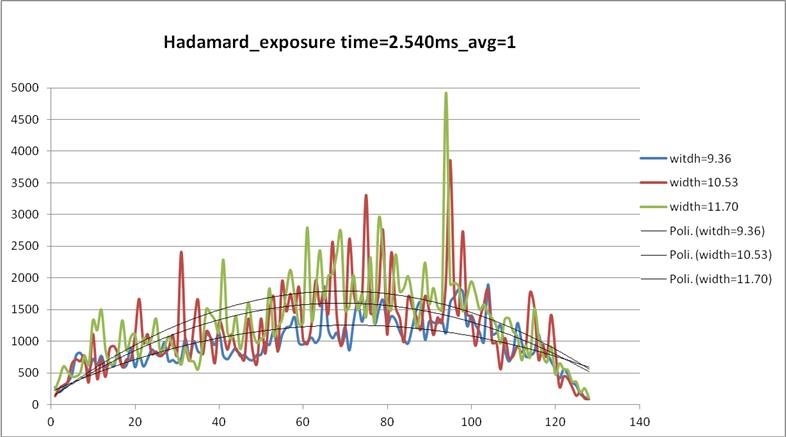Good day gentlmen,
We have performed many tests in order to characterize your spectrophotometer in terms of SNR, and decided to evaluate the Noise Free Counts formula in order to compare our current Golden sample with your new sopectrometer.
The formula is reported below:
Where:
Ref-i=Intensity of the reference spectra at wavelength-i
Dark-i=IUntensity of Dark spectra at wavelength-i
I =standard deviation of signal dynamic (( Ref-i ) – ( Dark-i ) )
The design of the experiment is based on the following rationales:
-
The spectra wavelength range equal to the max available with DLP instrument;
-
The number of points equal to 128;
-
The pattern width equal to 10nm;
-
The average equal to 1 in order to reduce the total spectra acquisition time;
-
Pattern type Hadamard in order to maximize SNR.
-
Exposure time is the variable parameter use in order to increase the SNR: starting from 0.635ms to 15.24ms.
Our results driven to the following observations: :
-
Increasing the exposure time: there is a significant improvement moving from 0.635ms to 1.270ms ( about X2 factor ) while increasing again the exposure time there is a clear saturation effect that fix the NFC about 1500 counts with a time of 5.080ms. Moving to 15.24ms NFC decrease up to 1200 counts.
-
Increasing the wavelength step from about 6nm up to 8nm, keeping constant all others parameter with the exposure time 15.24ms there is a reduction of the NFC to about 1150 counts.
Considering that our golden sample provides in the same wavelength range an average NFC about 6200 counts ( keeping the average equal to 1! ), we are wondering how we can work in order to reach a NFC value close to our current one.
Your comments about our test results on the dependence of exposure time vs SNR in case of Hadamard pattern will be appreciated. Honestly we expected a better improvement increasing the exposure time.
We are wondering also if you performed a similar evaluation of SNR and if you have data to share.


